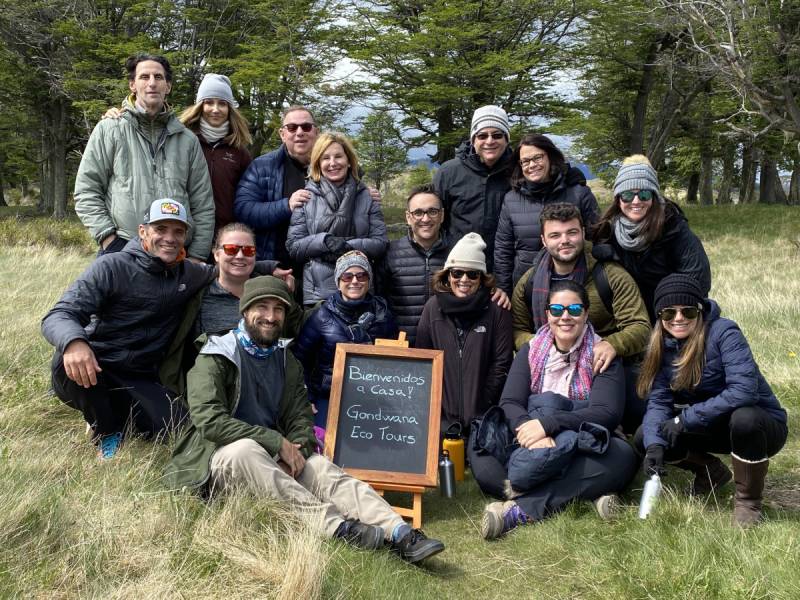Do Northern Lights Ever Appear Over Montana?
PRIVATE & SMALL GROUP TOURS TO THE WORLD'S BEST DESTINATIONS
Are You Planning A Trip To See The Northern Lights?

Northern Lights in Montana: A Tour Company's Guide to the Best Viewing Spots
Montana's big skies don’t just offer stunning views of mountains and prairies—they also make it one of the best states in the Lower 48 for experiencing the northern lights. With low light pollution, a northern position, and scenic open horizons, Montana gives aurora chasers plenty of reasons to look up. If you’re curious about when, where, and how to catch the aurora here, read on for tips from our expert tour team.
Why Montana Is Ideal for Northern Lights Viewing
Montana’s wide-open skies and northern latitude make it a fantastic destination for seeing the Northern Lights. Glacier National Park in particular draws photographers and adventurers during high solar activity years.
Top Cities and Areas in Montana for Aurora Watching
When chasing the lights in Montana, prioritize these destinations:
- Glacier National Park
- Great Falls
- Whitefish
When to Go: Seasonal Outlook
- Spring: Moderate – Weather is warming but skies can still be clear and dark in early spring.
- Summer: Low – Nights are too short, although brief sightings are possible during major storms.
- Fall: High – Crisp, dry air and long nights create perfect viewing conditions.
- Winter: Very High – Long nights and frequent clear skies make it the prime aurora season.
Can You See the Northern Lights in Major Cities?
In larger cities like the state capital or metro areas, light pollution reduces your chances. However, during KP 7+ events, faint displays may be visible even from city outskirts. For best results, drive 30–60 minutes away from any urban glow.
Recommended Aurora Hotels & Lodges
Looking for the perfect basecamp? These accommodations are popular with aurora travelers:
- Many Glacier Hotel
- Belton Chalet near Glacier Park
Aurora Forecast (2026–2030)
| Year | Aurora Activity Forecast | Notes |
|---|---|---|
| 2026 | ⭐⭐⭐⭐⭐ Very High | Peak of Solar Cycle 25. Most geomagnetic storms are expected. Prime year for photography. |
| 2027 | ⭐⭐⭐⭐½ Extremely High | Strong aurora lag year. Continued storm activity, excellent conditions continue. |
| 2028 | ⭐⭐⭐ Moderate to High | Activity begins to decline, but strong auroras still occur, especially at high latitudes. |
| 2029 | ⭐⭐ Low to Moderate | Lower sunspot numbers. Occasional storms possible, but less frequent. |
| 2030 | ⭐ Low | Aurora activity wanes as Solar Cycle 25 fades. Rare but possible events with clear skies. |
Expert Tips from Our Tour Team
- Track real-time KP Index and cloud cover before heading out.
- Use photography apps and bring a sturdy tripod for night shots.
- Plan multiple nights for your trip to increase odds of catching a display.
- Stay flexible—local weather can change quickly in northern regions.
Book a Full Aurora Experience
For those who want to go all-in on chasing the lights, consider our recommended tour options. Or read our full list of top aurora-viewing states in the U.S.
Ready to go big? Explore our guided trips to Fairbanks, Alaska.
Sources: NOAA, Aurora Tracks, Andy Keen, Space.com, NASA
Download all three Alaska tour brochures for tour dates and pricing.

About Gondwana Ecotours
Gondwana Ecoutours specializes in small group and private tours to bucket list destinations around the world. Our itineraries are carefully curated to include both unique nature and culture and fun activities are suitable to most travelers. Traveling with guides who live in the communities we visit add depth and authenticity to the experience.
| See All Tours > |

